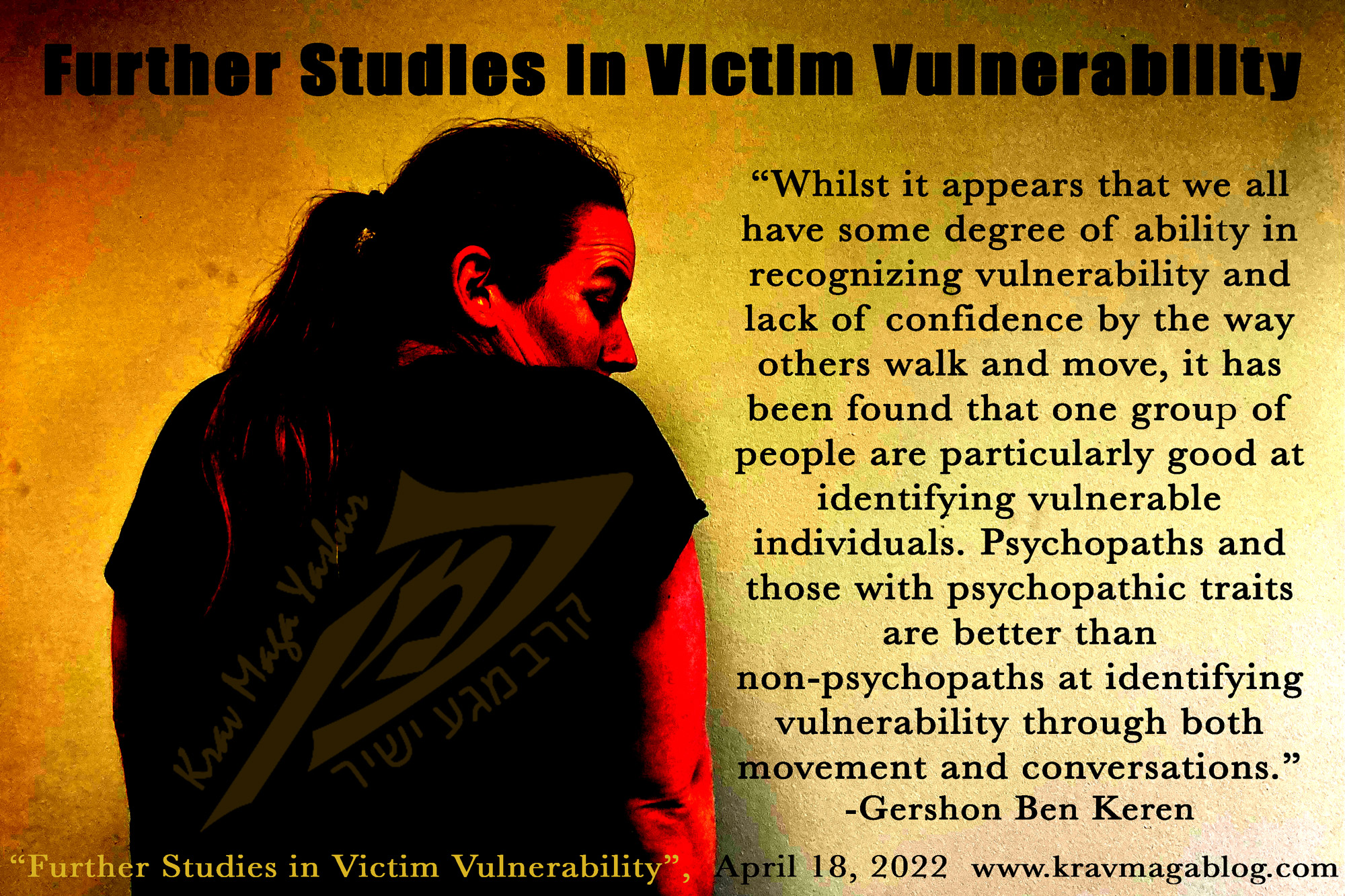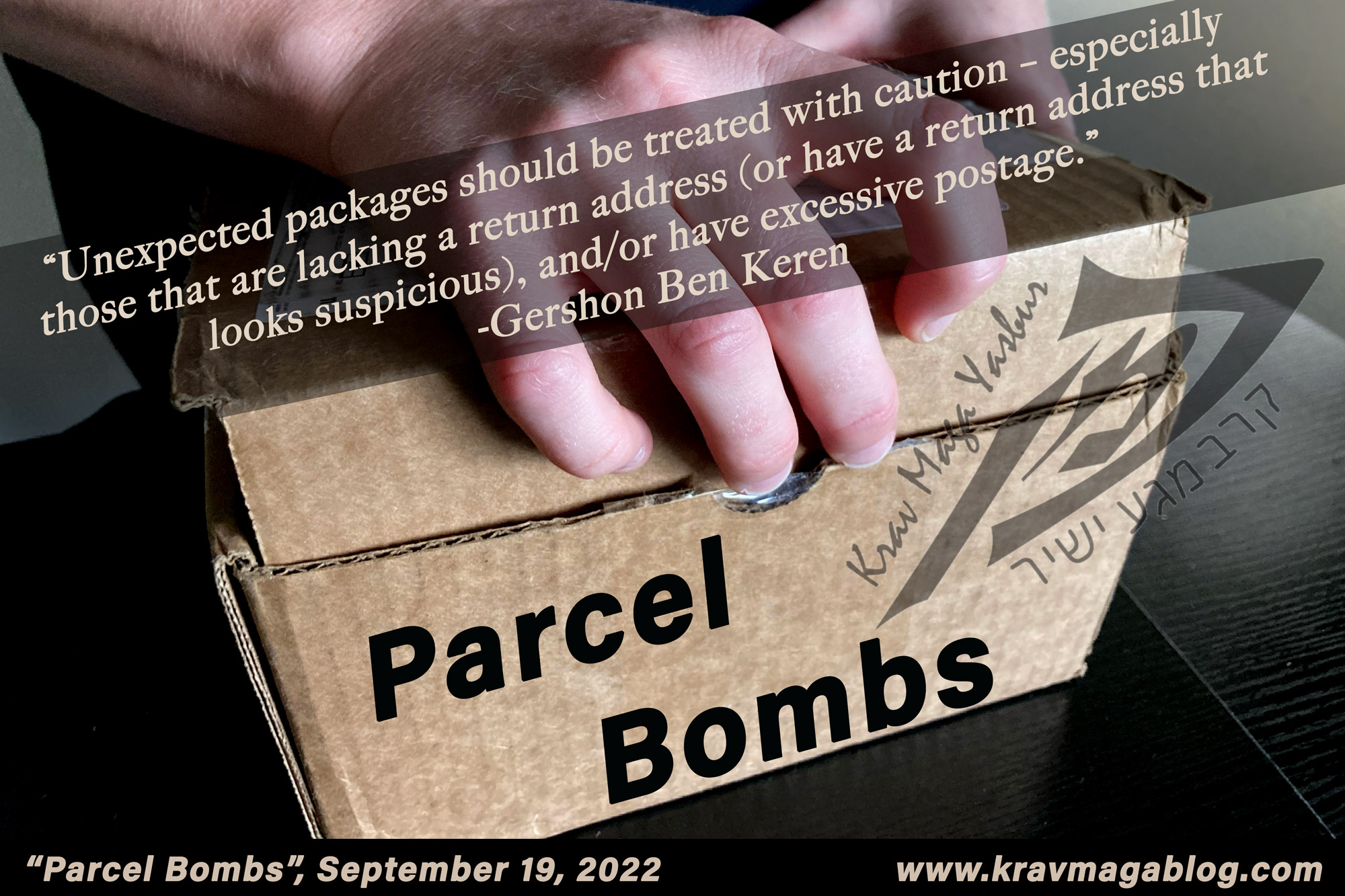Parcel Bombs, is an article written by Gershon Ben Keren, a 5th Degree Black Belt in Krav Maga, who teaches Krav Maga in Boston, MA. He has also authored three Amazon best-Selling Books on Krav Maga.
Between 1978 and 1995, Ted Kaczynski sent universities, and airlines sixteen parcel bombs, which resulted in three deaths and injured twenty-three others. He saw violence as the only way to bring down a techno-industrial society, which he believed was destroying the planet. Because of his media profile, and the message behind his terrorism, which was unique, in an era where terrorist acts tended to directly address specific issues, it would be easy to quickly dismiss him as a one-off. However, on Tuesday evening (September 13th, 2022), a pressurized device was sent to a Northeastern University (Boston, Massachusetts) building (Holmes House), where a virtual reality (VR) program is located. The device when it detonated, caused minor injuries to an employee. An accompanying note was found railing against VR, and Facebook. Although not well reported/covered by the media, there has not been a gap of over twenty-five years, in terrorism that is motivated by a fear and hatred of technology e.g., in August 2011, a parcel bomb was sent to two nano-technology researchers, who worked in a university, in Mexico City, by a group who referred to themselves as “Individualidades Tendiendo a lo Salvaje” (Individuals Towards the Savage/Wild – ITS). Like Kaczynski they had written a manifesto – which they published online – attacking technology. Similar attempted bombings have taken place in Switzerland (2010), where a group (the Informal Anarchist Federation International Revolutionary Front) tried to bomb IBM’s nano lab. The purpose of this article is not to examine eco-terrorism (though it is worth reminding ourselves that such groups exist), but to examine the threat/danger of parcel/package bombs and devices e.g., who sends them, why they choose this form of attack, and how to recognize such packages etc.
Parcel bombs have the benefit of remotely targeting specific individuals, as they can be addressed to a person or group. A bomb that is placed in a building, may target a specific individual or group of individuals, but may end up harming others, and missing those it was actually intended for, if they don’t happen to be there at the time of the explosion e.g., on 8th November 1939, Adolf Hitler, finished a speech he was making at a Munich beer hall early, in order to return to Berlin. Just 13 minutes later a bomb that was intended to assassinate him exploded, resulting in eight casualties, in the area where Hitler would have been standing. Parcel bombs are usually detonated when opened, so as long as it is the individual being targeted who opens the package, then their presence is guaranteed. In the case of the Northeastern parcel bomb, the bomber may not have had a specific individual in mind, but rather anyone who was associated with the virtual reality program would suffice as a target. Using the mail system, also means that bombs can potentially be sent from great distances i.e., the bomber does not have to travel or be local to the target they have selected. This can also mean a reduced chance of detection. If the package weighs less than a pound (just under half a kilo), it doesn’t have to be weighed at a post office, and can simply be stamped, and left i.e., there is no formal record of the transaction reducing the chance of a bomber being caught. This also affords an opportunity for detection, as it is likely that the bomber will use excessive postage/stamps on what will be a relatively small package. One other way that many bombers limit detection is by destroying the tools that they used to make the bomb(s), which limits forensic identification, should a parcel be traced back to a specific individual. This makes identifying a terrorist who sends bombs through the post extremely difficult e.g., they will not be caught on CCTV footage at the site of the attack, have travel documents (tickets, GPS records) that link them to the locale, or much forensic evidence to link them to their crimes. This is one of the reasons that it took over seventeen years to identify Ted Kaczynski as the Unabomber – and then it was down to a family member who identified some of his idiosyncratic speech and ideas, contained in his manifesto that was published in the Washington Post as his demand to stop his bombing campaign i.e., he wasn’t initially identified by linkage to the bombings.
Most of the packages and parcels I receive, I’m expecting e.g., I can go to my Amazon orders and see what is expected that day. Obviously, for large organizations this is less predictable, however unexpected packages should be treated with caution – especially those that are lacking a return address (or have a return address that looks suspicious), and/or have excessive postage etc. If there are instructions that state who should specifically open it e.g., “only to be opened by…”, this should be taken as a warning sign. Another warning sign is excessively secure packaging; if this is an explosive device being sent through the mail, the bomber wants to eliminate/reduce the risk of it going off prematurely. This may see the individual using some form of packaging paper and string to encase the box, the bomb is contained in, and writing on the outside things such as “handle with care” (they may also write instructions such as “Do not X-ray” – to limit detection of the contents of the package; using some form of X-ray machine is how most parcel bombs are initially identified by those responsible for their disposal) and instructions, “such as this way up” – an instruction that they may also be giving to the person opening the parcel, to ensure that their actions of opening the package trigger the explosion and/or result in them receiving the maximal blast etc.
Whilst receiving a parcel bomb is highly unlikely for most of us, there have been random cases of individuals, with little in common, being targeted e.g., in 2018, parcel bombs were sent to a number of individuals in Austin, Texas, with no obvious motive – the suspect, 23-year old, Anthony Conditt, committed suicide (by blowing himself up, when pulled over by the police), and left no record as to his motives. We should also recognize that there are individuals like Kaczynski and the Northeastern “Bomber”, who targeted individuals who worked in the technology field, an area that we wouldn’t naturally think of as one that would be targeted by terrorists. As with all security precautions, if something looks suspicious, it should be treated as being suspicious, even if that is something as ordinary as our mail.
0 COMMENTS















